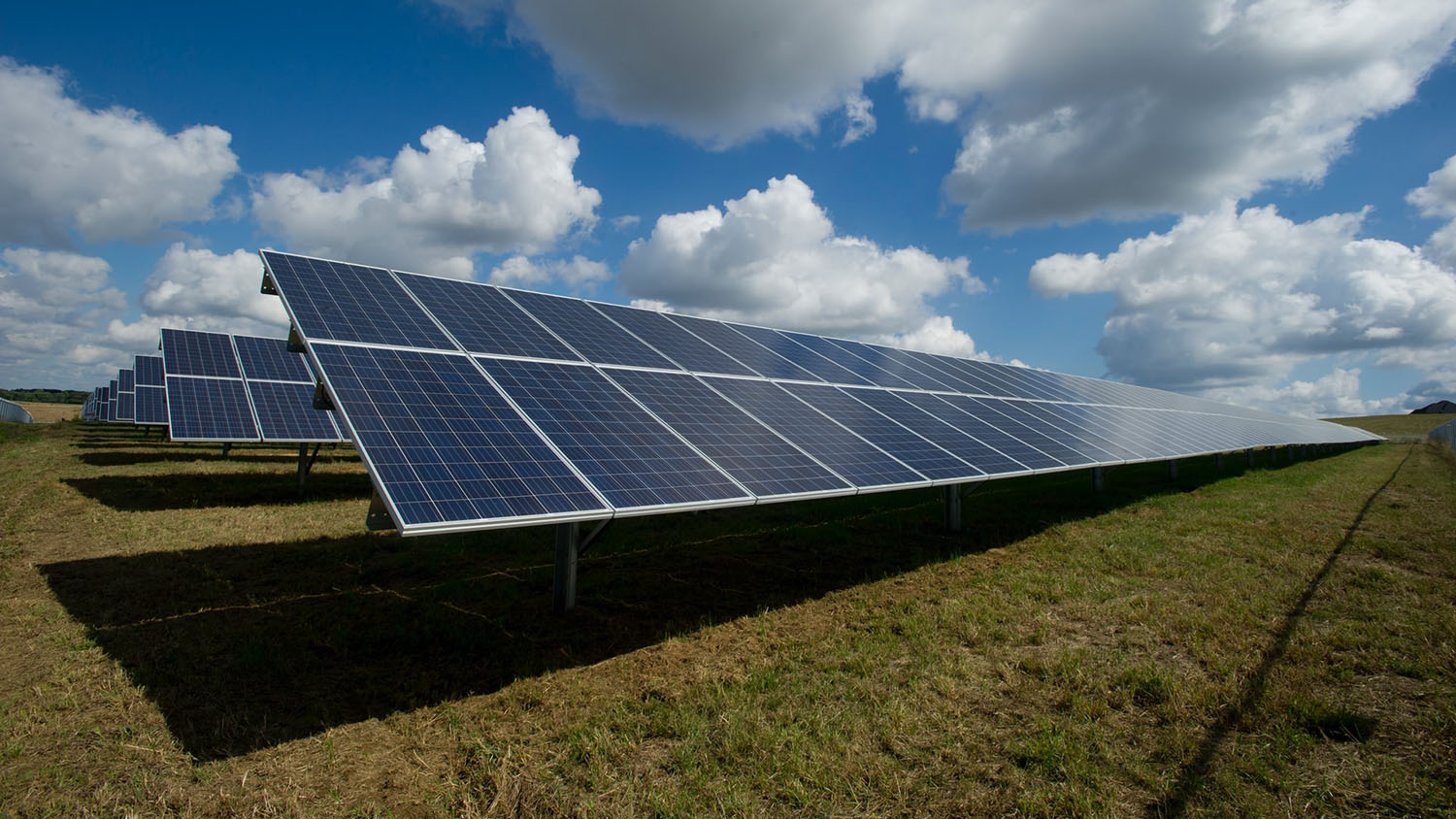Combining Energy Storage And Solar Offers Unexpected Power Reliability Boost

For Immediate Release
New research from North Carolina State University and North Carolina Central University finds that when a power system combines energy storage and solar power generation, the end result is greater than the sum of its parts in terms of the system’s ability to handle peak energy demand. This is encouraging news for renewable energy.
“Electric utilities are tasked with ensuring they can reliably meet consumer energy demands,” says Joseph DeCarolis, co-author of a paper on the work and a professor of civil, construction and environmental engineering at NC State. “Quantifying the reliability benefits of different generation sources informs where investments will be made.”
A power source’s reliability benefit is how much power a given source can be relied on to produce during times of peak demand.
“Our work here suggests that solar power can offer greater benefits to reliability than sustainable energy skeptics suggest,” says Jeremiah Johnson, corresponding author of the paper and an associate professor of civil, construction and environmental engineering at NC State. “Investing in both solar power and energy storage systems can unlock reliability value that neither technology would provide on its own.”
For this study, the researchers looked at the power system in North and South Carolina to assess issues related to renewable energy and reliability. With data on power demand and the mix of power generation sources, the researchers built computational models to assess how much power a system could expect from different sources during periods of peak energy demand. The models allowed researchers to vary the size of solar farms in the system and the amount of energy storage in the system to determine how those changes might affect the overall reliability benefits during periods of peak demand.
“When a system combines solar and energy storage, that combination can be relied upon to provide up to 40 percent more power during peak demand than if you just added the output from each source,” Johnson says.
“Basically, we found that solar power generation reduces the peak load that would need to be met with stored energy, and reduces the duration of that peak demand. In effect, there is a symbiotic relationship between these technologies.”
The paper, “The Symbiotic Relationship of Solar Power and Energy Storage in Providing Capacity Value,” appears in the journal Renewable Energy. First author of the paper is Daniel Sodano, a former graduate student at NC State. The paper was co-authored by Anderson Rodrigo de Queiroz, an assistant professor of business at NC Central.
The research was done with support from the North Carolina Policy Collaboratory.
-shipman-
Note to Editors: The study abstract follows.
“The Symbiotic Relationship of Solar Power and Energy Storage in Providing Capacity Value”
Authors: Daniel Sodano, Joseph DeCarolis and Jeremiah X. Johnson, North Carolina State University; Anderson Rodrigo de Queiroz, North Carolina State University and North Carolina Central University
Published: June 2, Renewable Energy
DOI: 10.1016/j.renene.2021.05.122
Abstract: Ensuring power system reliability under high penetrations of variable renewable energy is a critical task for system operators. In this study, we use a loss of load probability model to estimate the capacity credit of solar photovoltaics and energy storage under increasing penetrations of both technologies, in isolation and in tandem, to offer new understanding on their potential synergistic effects. Increasing penetrations of solar PV alter the net load profile on the grid, shifting the peak net load to hours with little or no solar generation and leading to diminishing capacity credits for each additional increment of solar. However, the presence of solar PV decreases the duration of daily peak demands, thereby allowing energy-limited storage capacity to dispatch electricity during peak demand hours. Thus, solar PV and storage exhibit a symbiotic relationship when used in tandem. We find that solar PV and storage used together make a more significant contribution to system reliability: as much as 40% more of the combined capacity can be counted on during peak demand hours compared to scenarios where the two technologies are deployed separately. Our test case demonstrates the important distinction between winter and summer peaking systems, leading to significantly different seasonal capacity values for solar PV. These findings are timely as utilities replace their aging peaking plants and are taking energy storage into consideration as part of a low carbon pathway.


